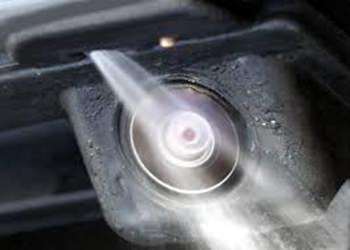
Continental in Europe has developed cleaning systems for on-board sensors such as video cameras, radars and lidars to keep the autonomous vehicles of the future running reliably and safely. (Lidar, which stands for Light Detection and Ranging, is a remote sensing method that uses light in the form of a pulsed laser to measure variable distances.)
According to Continental, dirty sensors on automated cars have the potential to trigger limp-home mode or even bring the vehicle to a halt. Cleanliness really is next to godliness it seems.
“If the sensor says ‘I cannot work’, the car stops,” said Continental engineer Rolf-Dieter Schlein. “That’s impossible, totally.”
Speaking at the recent Continental TechShow, Schlein said car-makers were already getting feedback that the rear cameras on cars could become inoperative because they were “totally blind”.
He said dirt accumulation and frost after an icy night were the main culprits.
Continental has been designing cleaning systems for windscreens, taillights and headlamps for 30 years, and Schlein said the company brought this experience to bear on the new problem of sensor cleaning.
“Now we have the complete system,” he said. “We have the reservoir, we have the pumps, we have the hoses, all heated if necessary for wintertime, and we can heat not only the hoses and the fluids, we can also heat the lenses.”
“The camera can recognize if she’s blind. There is an algorithm behind the camera, and the camera normally expects changing images,” he said.
“If there is an amount of pixels which didn’t change any more, even if you are driving, then she says ‘there must be something wrong, I must be cleaned’.”
That triggers a pump and some electro-hydraulic valves to clean the affected sensor.
“If we are talking about electric and automated driving, we expect about 20 sensors per car,” he said. “That’s a lot.”
“So we are using, in the first step, a dosing valve. That means it doesn’t matter how long the pump runs, it gives only a short shot of water, so we can control the amount of water per cleaning cycle. That will help keep the water consumption on a very low level.”
“The second step is we are trying a combination of water and air. That means first water, and then an air shot to clean the last droplets.
“This is important for active sensors like lidar and radar. They have the problem they are an active sensor. That means they sense some waves, radar waves or (laser) light waves, and the rates for the feedback from the outside determine how the sensor reacts.”




